Mr. John Hennessey has always been very clear about his intention for the Venom F5, his latest hypercar creation. The low-slung hypercar—named after the highest rating on the Fujita scale of tornado strength—is gunning for the title of the world’s fastest production car. To do that, though, it will not only have to crack the magical 300 mph barrier but also best the 304.773 mph time set by the Bugatti Chiron SuperSport 300+ back in August 2019.
Hennessey’s obsession with speed is no secret within the car community. Anything is fair game—supercars, SUVs and even pickups. His company, Hennessey Performance, has taken ordinary sports cars and transformed them into bonkers road rockets.
One such conversion, the Hennessey Venom GT, based on a Lotus Elise, even managed to snag a few Guinness World Records. On January 21, 2013, the Venom GT was crowned the fastest road-legal car from 0–186 mph (0–300 km/h) with an average acceleration time of 13.63 seconds. Its 270.49 mph VMax run in February 2014 was also a record, beating the time set by the Bugatti Veyron SuperSport.
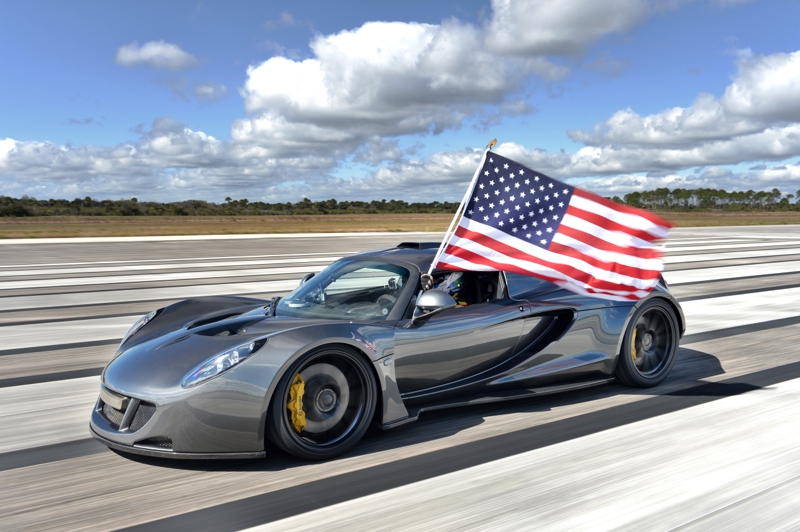
The Venom GT may be gone now, but in its place is the even more formidable Hennessey Venom F5. This time, Hennessey has significantly upped the ante. Instead of modifying an existing car, the automaker has built the hypercar from the ground up in its bid to redefine the boundaries of physics.
The Heart of the Beast: Inside the Hennessey Venom F5

Engine power—bucketloads of it—is at the heart of any record-breaking top speed attempt, and the Hennessey Venom F5 comes well equipped in that regard. The power plant is so special that it even gets its own name—Fury.
The custom-built rear-mid-mounted engine is a 6.6-litre twin-turbocharged V8 that puts out a thumping 1,817 hp and 1193 lb-ft of torque. Even more impressive is the fact that almost all of that torque output is available from 2,000 rpm—perfect for some eyeball-sucking acceleration.

The Venom F5 has an advertised curb weight of 1,385 kg (3,053 lbs). That translates to a power-to-weight ratio of 1.31hp-per-kg (0.60hp-per-lb)—one of the highest ever in any road car.
It is important to note that the Venom F5’s power output is also at least 240 hp more than what’s put out by the Bugatti Chiron SuperSport 300+. That should come in handy as the F5 takes aim at the Chiron’s record.
Aerodynamics & All That for the Hennessey Venom F5
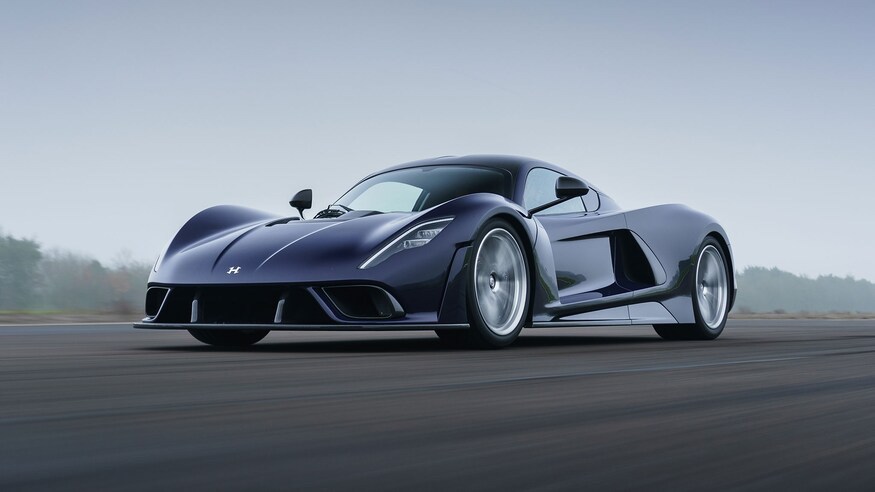
It’s not just about how many horses are under the hood; there are a host of other important elements for any car attempting a VMax run. They include the rolling resistance, aerodynamic drag, and even the tires to be used.
These are all areas that have been considered and addressed by John Hennessey and his team. The prototype F5 had a drag coefficient of 0.33, a number that increased to 0.39 for the production version. During development, the engineering team realized that the original design did not allow for maximum downforce in the rear at 300 mph. Also, the aggressive front splitter and rear wing created too much drag that would only work against the car’s forward momentum.
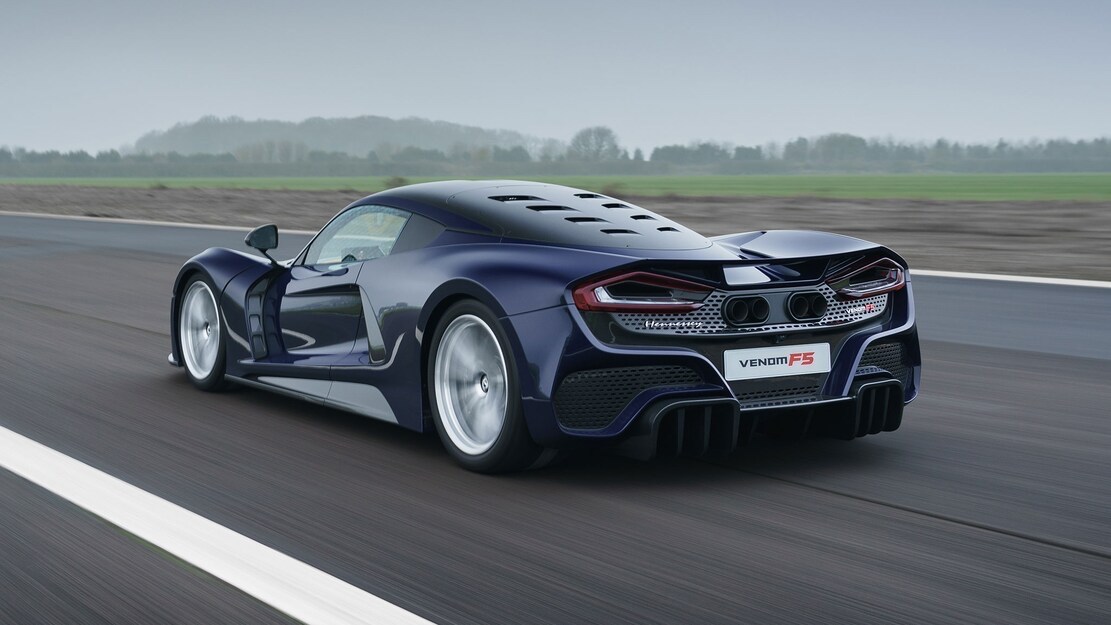
Consequently, the rear deck was raised by 3.9 inches, and the large rear spoiler was ditched in favour of a smaller one. The front end was also balanced with a less aggressive splitter to reduce the effects of drag.
The 0.39 drag coefficient lags way behind sports cars like the Porsche Taycan but is still considered acceptable for the Venom F5’s top speed run. Interestingly, the Venom F5 lacks any active aerodynamic elements and instead relies on varying ride heights to alter the airflow angle, thereby creating different levels of downforce.
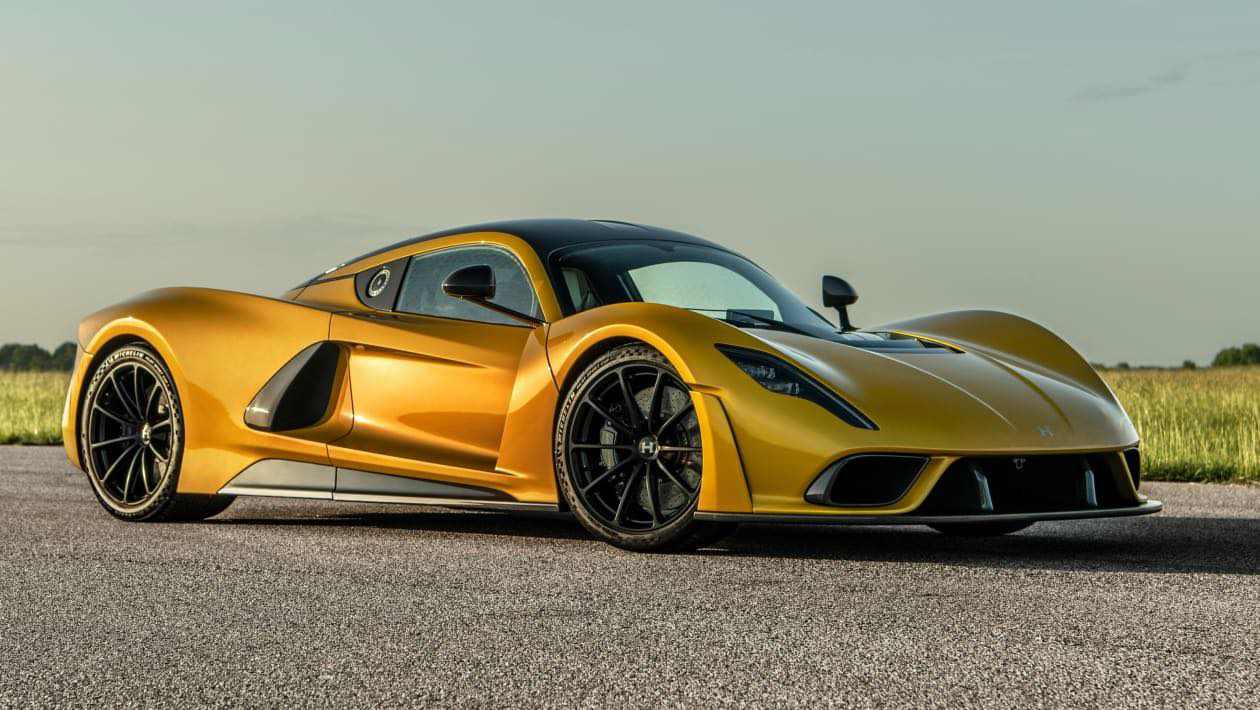
The tires represent another puzzle piece that cannot be discounted if the Venom F5 is to be successful in its quest. They have to be incredibly sturdy and provide the needed traction, stability, and grip at extremely high speeds without breaking apart.
The team at Hennessey Performance has addressed this by fitting the hypercar with massive 345/30 section 20-inch rear tires and 265/35 section tires up front, mounted on 19-inch wheels. The tires are Michelin Sport Cup 2s and will be rigorously tested by Michelin to be sure they can withstand the stress of the VMax runs.
Spec vs. Spec: The Hennessey Venom F5 & the Bugatti Chiron SuperSport 300+
| Hennessey Venom F5 | Bugatti Chiron Super Sport 300+ | |
| Engine | 6.6-litre twin-turbocharged V8 | 8.0-litre quad-turbocharged W16 |
| Horsepower | 1,817 hp | 1,577 hp |
| Torque | 1,193 lb-ft | 1,180 lb-ft |
| Drag Coefficient | 0.39 | 0.33 |
| Curb Weight | 3,053 pounds | 4,361 pounds |
| 0 to 62 mph | 2.6 seconds | 2.4 seconds |
| 0 to 124 mph | 4.7 seconds | 5.8 seconds |
| 0 to 186 mph | 8.4 seconds | 12.1 seconds |
| Top Speed | *311 mph | 304.774 mph |
*as claimed by the manufacturer

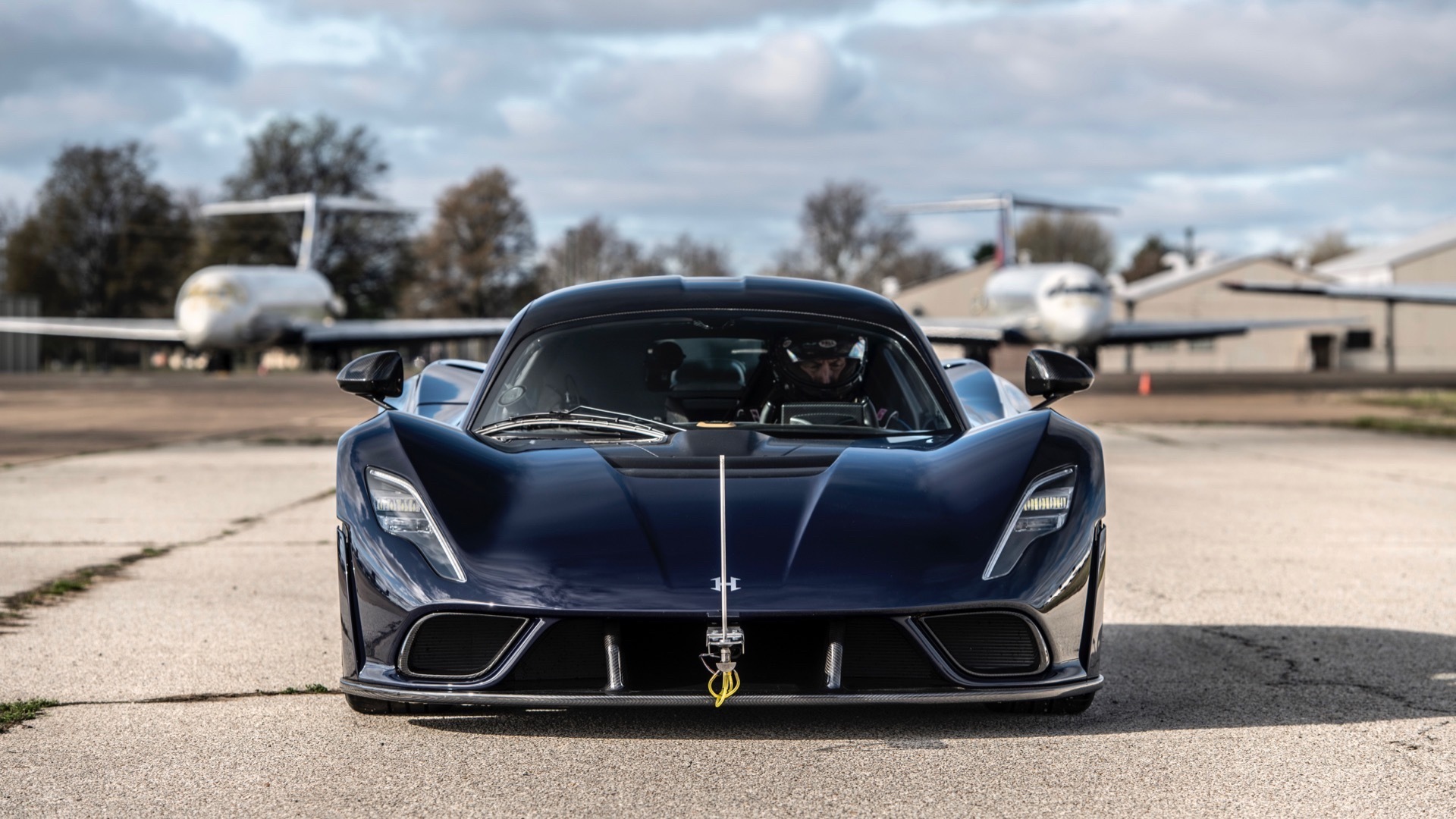
Both performance titans boast incredible amounts of power, but it’s the Venom F5 that holds the advantage in terms of horsepower and torque. That becomes even more significant when you consider that the Venom F5 is over a thousand pounds lighter than the Chiron. The Chiron gets the jump over the Venom F5 to 62 mph, but from that point on—at least on paper—the American hypercar takes over as it blasts on to its maximum speed.
There is an important caveat here, though. The 311 mph top speed for the Venom F5 is purely the manufacturer’s claim, albeit one based on a host of mechanical data. On the other hand, the Bugatti Chiron’s maximum speed is the result of an actual record speed run in the real world, and that is all that truly counts. For now, sole bragging rights belong to the French hypercar.
Can the Hennessey Venom F5 Do It?
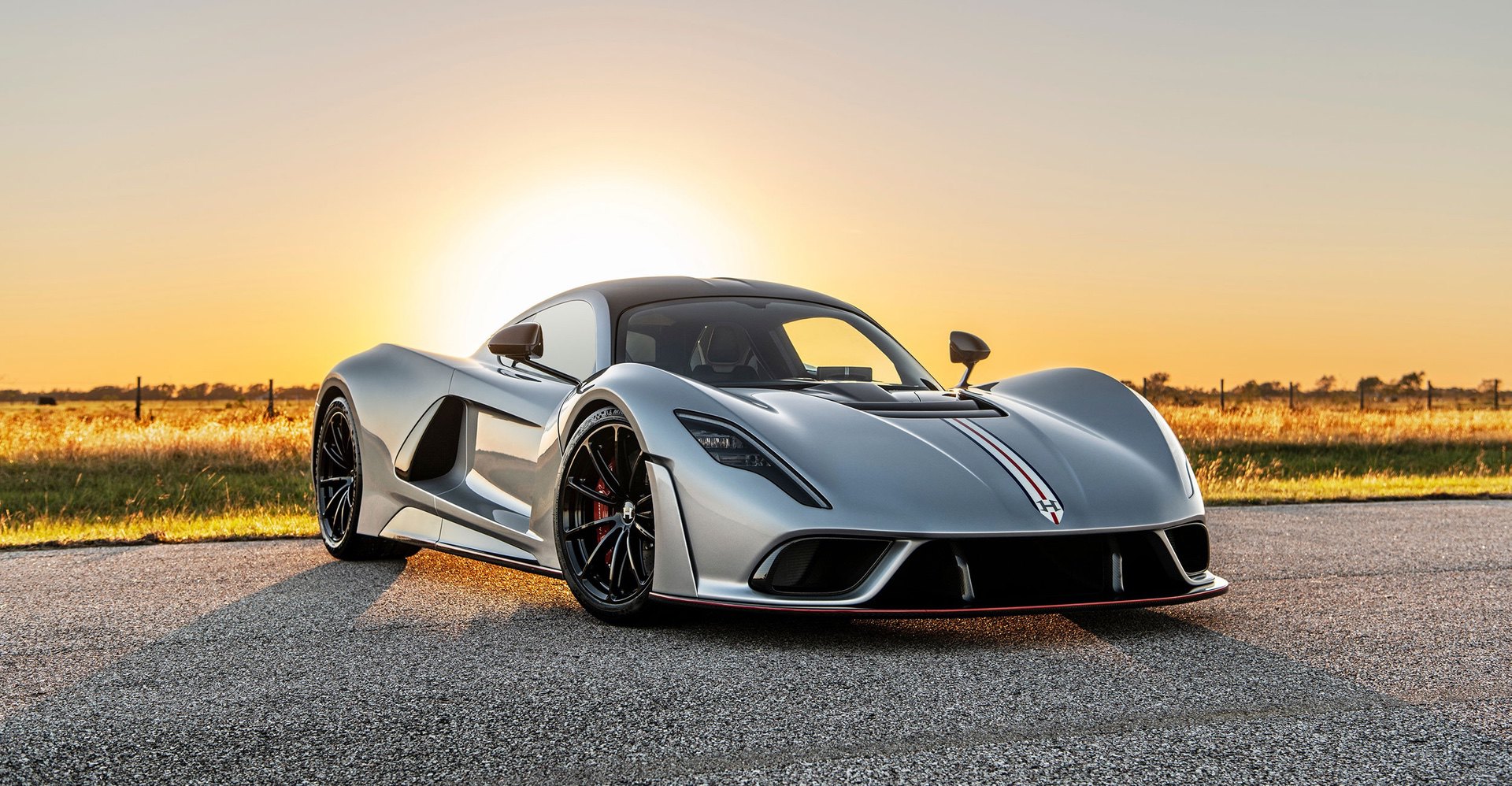
Yes. The numbers indeed suggest that the Hennessey Venom F5 should hit 300 mph and possibly even reach the claimed 311 mph mark. However, it is not that simple. Ask SSC North America. The carmaker once tried to crack the 300 mph barrier with its hypercar, the now infamous SSC Tuatara.
The attempt ended in an embarrassing fiasco, even though the car would later go on to set a production-car speed record. Still, the highest speed the SSC Tuatara reached during its record run (measured as the average speed over two runs in opposite directions) was 286.1 mph. That is still some ways off the 300 mph mark.
Ultimately, this only shows the magnitude of what Bugatti achieved with the Chiron. The takeoff speed of a Boeing 747 is around 180 mph. To keep the Chiron SuperSport 300+ stable and planted at speeds north of 300 mph is nothing short of an engineering marvel.
Bugatti has made it clear that achieving record speed runs is no longer a priority—hitting 304 mph is seen as making a big enough statement. Will the Hennessey Venom F5 succeed in making an even bigger statement by hitting 311 mph? We will just have to wait and see.
One thing is sure, though; the Venom F5 certainly seems to possess the tools needed to get the job done.




